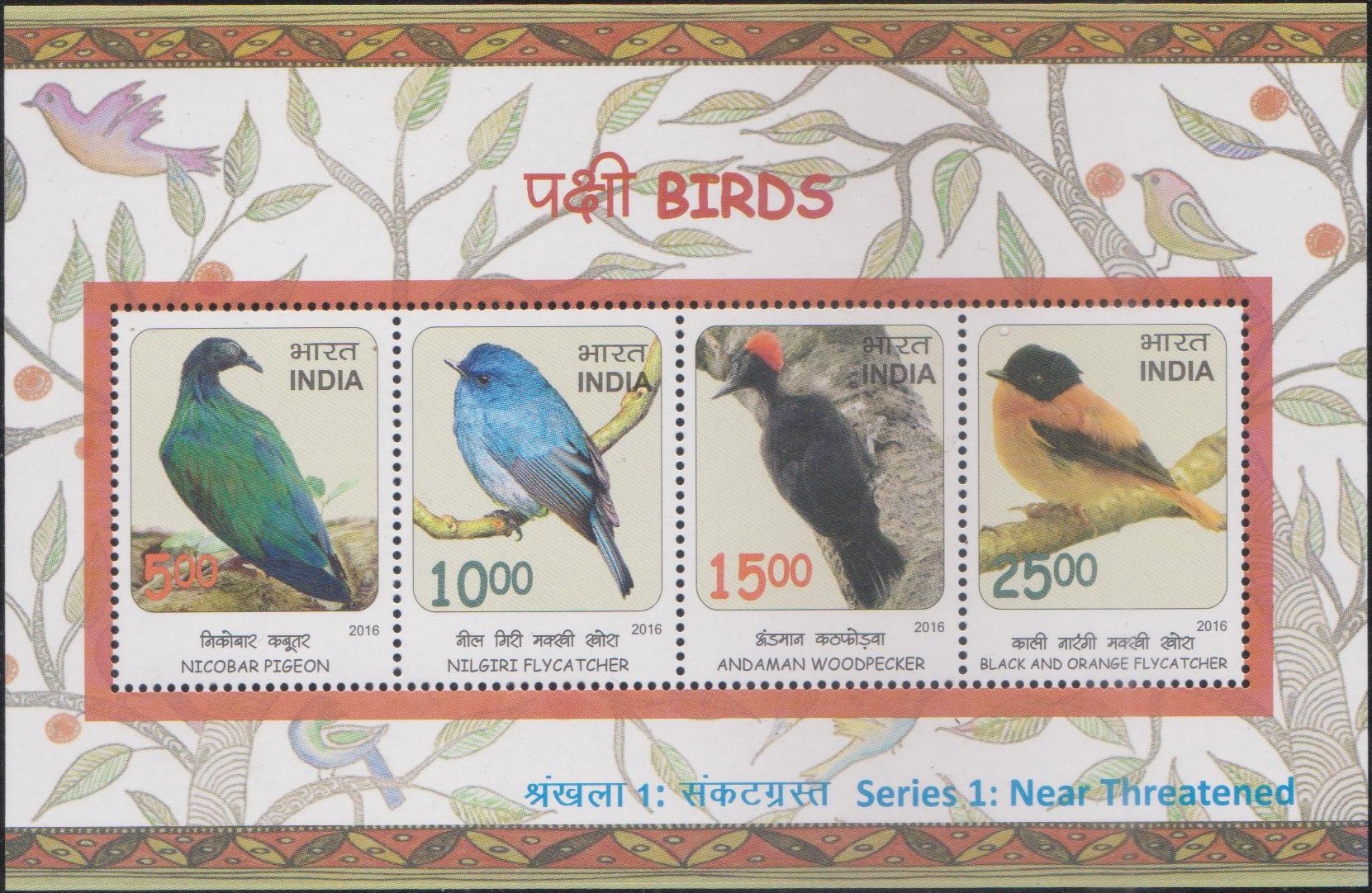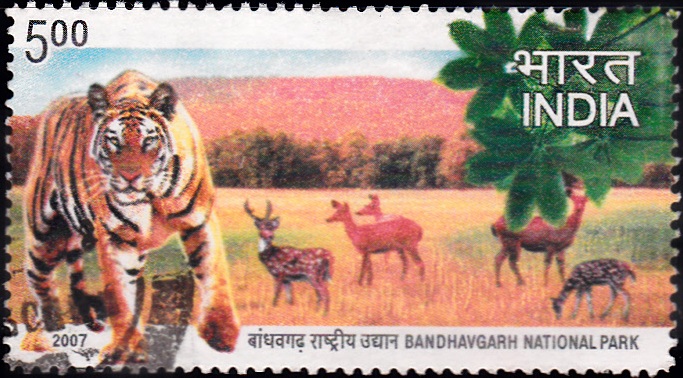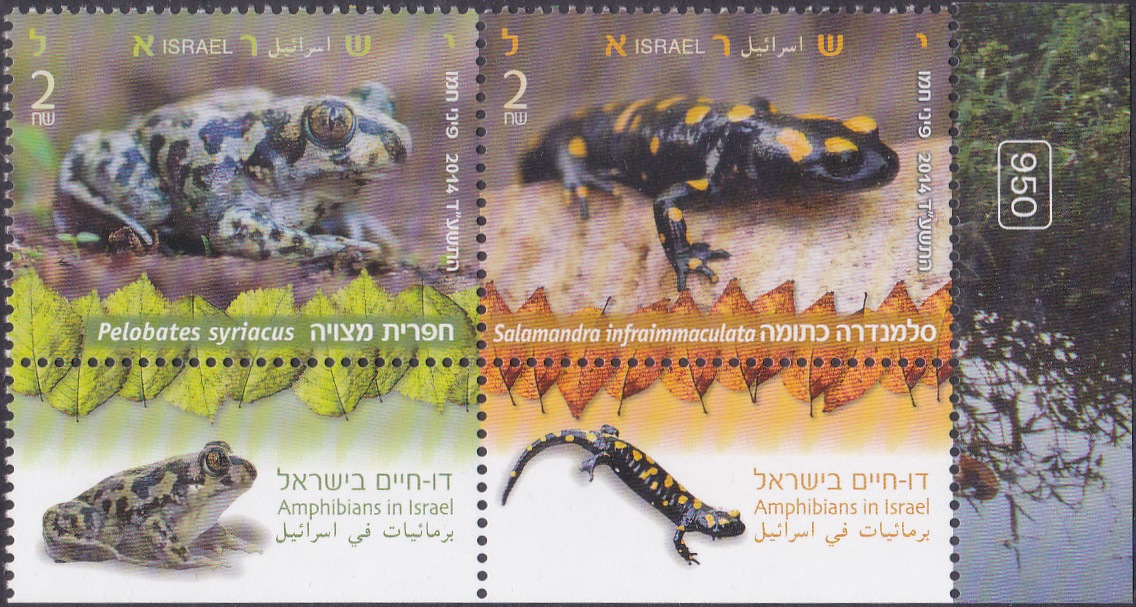
India on Ladybird Beetle
A Miniature Sheet consisting of 4 nos. of special postage stamp on the Ladybird (Coccinellidae) :




 Issued by India
Issued by India
Issued on Feb 23, 2017
Issued for : Department of Posts is pleased to issue a set of four Commemorative Postage Stamps on “Ladybird Beetle”.
Credits :
Stamp / Miniature Sheet / Sheetlets / FDC / Brochure / Cancellation Cachet : Shri Suresh Kumar
Type : Miniature Sheet, Mint Condition
Colour : Multi Colour
Denomination : 500 Paise (2), 1500 Paise (2)
Miniature Sheet Printed : 0.1 million
Sheetlets Printed (4 types) : 20000 each
Printing Process : Wet Offset
Printer : Security Printing Press, Hyderabad
About :
- Beetles are a group of insects that form the order Coleoptera. The word coleoptera is from the Greek which means “sheathed wing”, because most beetles have two pairs of wings, the front pair, being hardened and thickened into a shell-like protection for the rear pair and the beetle’s abdomen. These hard forewings serve as a protective shield for the fragile flying wings, which are folded underneath. The order contains more species than any other order, constituting almost 25% of all known animal life-forms.
- Coccinellidae or ladybird is a widespread family of small beetles. The name coccinellids is derived from the Latin word coccineus meaning “scarlet”. The name “ladybird” originated in Britain where the insects became known as “Our Lady’s bird” or the “Lady beetle”. They are commonly yellow, orange, or red with small black spots on their wing covers, with black legs, heads and antennae. However, such colour patterns vary greatly. They have a bitter taste, and their bright coloration is thought to serve as a warning to predators. Entomologists widely prefer the names ladybird beetles or lady beetles as these insects are not classified as true bugs.
- Most coccinellids have oval, dome-shaped bodies with six short legs. Depending on the species, they can have spots, stripes, or no markings at all. Seven-spotted coccinellids are red or orange with three spots on each side and one in the middle; they have a black head with white patches on each side. Ladybird beetles are mostly under ¼ inch (6 mm) long and are nearly hemispherical in shape, with very short legs.
- The underlying pattern and colouration are determined by the species and genetics of the beetle, and develop as the insect matures. In some species its appearance is fixed by the time it emerges from its pupa, though in most it may take some days for the colour of the adult beetle to mature and stabilise. Generally, the mature colour tends to be fuller and darker than the colour of younger ones.
- Beetles are endopterygotes, which means before emerging as winged adults they undergo complete metamorphosis, a biological process by which an animal physically develops after birth or hatching, undergoing a series of conspicuous and relatively abrupt change in their body structure. The larval life stages of beetles are very diverse in appearance, but generally are elongate with three pairs of jointed legs at the front of the body. They are told apart from caterpillars by the lack of claspers on the hind segments of the body.
- The majority of coccinellids species are generally considered useful insects, because many species prey on herbivorous homopterans such as aphids or scale insects, which are agricultural pests. Nearly all ladybird beetles, both larvae and adults, are predators on destructive, plant-eating insects. It only takes about four weeks for the ladybeetle to transform from a tiny egg to an adult. Some females can lay up to 1,000 eggs in one summer. The ladybeetle may lay her eggs near an aphid colony, or on plants where the larvae will have a ready supply of food when they hatch. The adults gather in large numbers in the fall, prior to winter hibernation, and are often collected at that time by farmers for use in pest control, as Aphids are a huge problem for farmers and gardeners, and therefore a ladybug is a great help to the farmer.
- Text : Based on the material available on internet.








I think this stamp was issued on 23 Feb 2017. It is mentioned as 1st Jan 2017, here. Thanks.
Yes, you are right. Thanks for the correction.